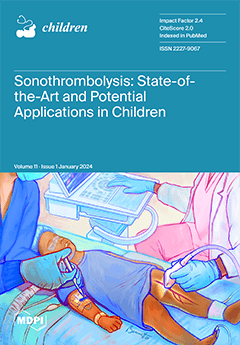This study aims to investigate the potential relationship between energy expenditure, physical fitness level, physical activity, and body mass index among children taking part in a 30 min school recess. A total of 259 participants from three schools were included in this study.
[...] Read more.
This study aims to investigate the potential relationship between energy expenditure, physical fitness level, physical activity, and body mass index among children taking part in a 30 min school recess. A total of 259 participants from three schools were included in this study. Data on energy expenditure during recess, age, gender, anthropometric measurements, global physical fitness, and physical activity index were recorded. The evaluation sessions occurred twice a week on alternate days over two weeks. A significant gender difference was observed in energy expenditure during recess, favoring boys (
p < 0.01). The participants classified as very active exhibited significantly higher scores compared to those categorized as sedentary and moderately active, respectively (
p < 0.01), with a poor but significant correlation (rho: 0.208;
p < 0.001). There were significant differences between energy expenditure and cardiorespiratory fitness and energy expenditure and global physical fitness (
p < 0.01) with fair (rho: 0.289;
p < 0.001) and poor (rho: 0.196,
p = 0.001) correlation, respectively. In contrast, there were no significant differences by body mass index categories (
p = 0.571). These results suggest that gender, physical activity index, and global physical fitness were found to influence energy expenditure during a 30 min recess. However, no significant relationships were found with the body mass index.
Full article






